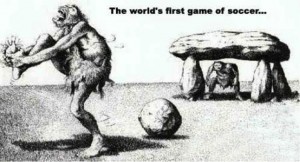In 2008, Microsoft, one of the world's most successful technology companies, decided to launch a large and expensive campaign featuring Bill Gates and Jerry Seinfeld. Both the advertising agency and Microsoft thought it would be a huge hit. Everyone on board agreed that the combination of Gates, one of the wealthiest men in the world and a well-known philanthropist, with Seinfeld, one of the world's most powerful celebrities, would allow Microsoft to better compete in a tough market. In the commercial, Bill Gates acts as a client in a shoe store and Jerry Seinfeld as his mentor, helping him find the perfect shoes. Microsoft invested $300 million in this campaign and chose to launch the campaign during the opening game of the NFL (National Football League) season.
And then, as Nassim Nicholas Taleb tells us in his book "The Black Swan ", something unexpected happened; the campaign crashed in what is called a "negative black swan". The commercial created a tsunami of negative comments on Facebook, Twitter and Myspace; causing Microsoft to immediately halt the campaign. Top marketers have large advertising budgets, research funding and access to creative, talented people; yet campaigns still crash and burn. Advertising has become a hit-driven business, much like television and movies. Marketers should learn more about the gamification opportunity and how to implement it, in order to drive hits and avoid crashes.
Why are games so important?

Games have been around since the early days of human history. Research shows that there is a strong and direct connection between our need for play and the complex way our brain works. In the early years of our lives, the years that shape the way we think and act, we played various games, from Chutes and Ladders to Monopoly. Playing games is natural for kids; creating a special mindset, it allows children to have fun and to interact with their friends in an enjoyable way, bringing excitement, laughter and amusement for all. During the first years of life, the brain implemented these habits and created patterns that affect our adult lives.
Unfortunately, as adults we can't play these childish games, but our brain still needs a way to provoke all these wonderful experiences again. Adults must find new games to produce pleasure and growth. Gamification has gained momentum in recent decades. More and more companies are discovering the huge potential of Gamification. Games can contribute to increased motivation, customer loyalty, call to action, sales, PR and more. Integrating gamification in modern times is particularly challenging due to the affluent content that has become widely available to the public.
Let's review two examples of companies that have learned how to incorporate gamification successfully.
Nike+ is a great way to engage with consumers. Nike launched a special website for athletes, allowing users to define their fitness goals and to record performance. With more than 28 million active users, Nike gained significant exposure. The most important things are focusing on what users want, helping them to achieve their fitness goals and creating an outstanding user experience.
Another example of successful gamification implementation comes from the B2B world. Bluewolf, a technology services company, launched a new internal campaign using game mechanics. The main idea was to drive their consultants to share knowledge and success stories that bring value to clients. Bluewolf then used this content to create “personal brands” through social media. Consultants could earn point and rewards, i.e. discounted hotel rooms. In this case, both clients and employees got a much higher value.
Key takeaways:
- Identify your business goals and your target audience.
- Brain storm and find the right game and game mechanics.
- Learn how to inspire, think about the different phases and elements.
- Identify what kind of reward system you wish to use, i.e. points, prizes, badges, contests etc.
- Think about the right Marketing tools and what kind of environment you need.
- Design mobile apps and websites.
- Test it first with a small group of people and optimize.
















